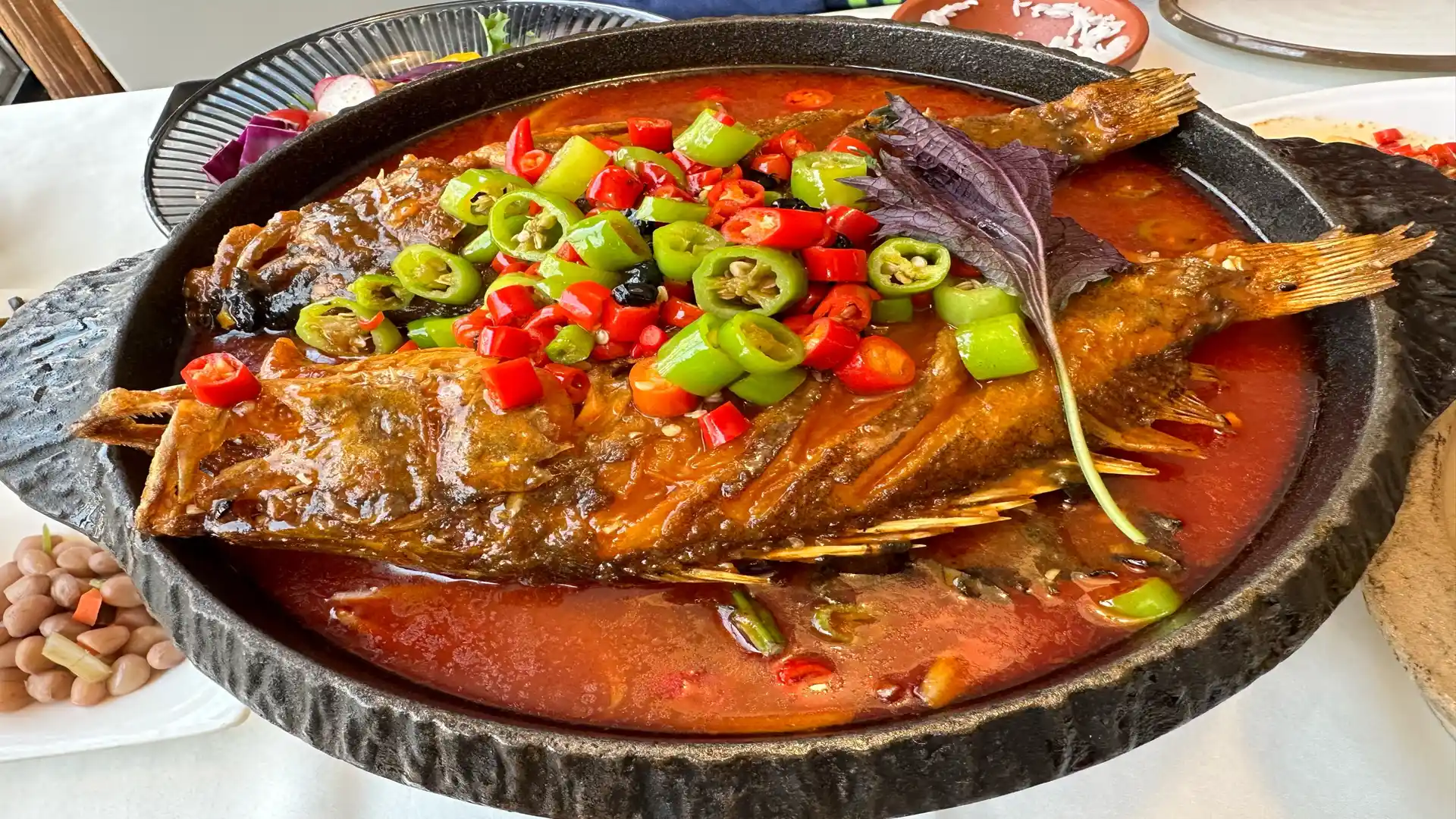臭剂量鱼的美味: 黄山的烹饪旅程, 安海
介绍:
作为烹饪专业人士, 我很高兴能深入了解安徽的烹饪宝藏世界, specifically the臭鳜鱼 (臭鳜鱼), 这道菜肴证明了该地区丰富的美食传统. 这道菜, 源自美丽的黄山市, 安海省, 中国, 是食物如何成为文化和品味之间桥梁的完美例子. 我们来探究一下它的起源, 文化意义, 这道菜的复杂性既是一种后天习得的口味,又是一种深受人们喜爱的主食.
起源和文化背景:
臭鳜鱼的历史可以追溯到几个世纪前, 有故事表明,它最初是为了在长途旅行中保存鱼类而创建的. 随着时间的推移, 这种保存方法演变成一种烹饪艺术形式, 成为徽菜的招牌菜. 这道菜深深植根于当地文化, 体现了世世代代与环境和谐相处的人们的聪明才智和足智多谋.
成分和准备:
臭鳜鱼采用传统方法精制而成,涉及特殊发酵过程. 主要原料是桂鱼, 以其肉质细嫩、风味浓郁而闻名. 首先将鱼清洗干净,然后用秘制配料腌制, 包括酒, 姜, 和其他调味料, 这对于形成独特的香气和味道至关重要. This腌制工艺 (发酵过程) 取自任何地方 6 到 8 天, 在此期间,鱼会产生特有的刺鼻气味.
质地和风味:
尽管它的名字, 臭鳜鱼以其鲜美的味道而闻名,与浓郁的气味形成鲜明对比. 发酵过程使鱼变嫩, 产生柔软片状的质地,入口即化. 味道很复杂, 酸味平衡, 咸, 和通过发酵增强的鲜味. 这道菜经常被描述为 “闻臭吃香” (闻起来很糟糕,但味道很好), 这是烹饪技术变革力量的真实证明.
外貌:
臭鳜鱼是一道视觉冲击力十足的菜肴. 鱼通常是整条呈现的, 鳞片仍然完好无损, 赋予它闪闪发光的外观. 由于发酵,皮肤呈现出轻微皱纹的纹理, 肉质显得苍白, 灰白色. 新鲜香菜或切成薄片的生姜等装饰物为菜肴增添了流行的色彩和新鲜的对比.
代表性菜肴和美食:
In Huangshan, 臭鳜鱼通常作为一道单独的菜肴, 让食客欣赏其独特品质. 然而, 它也可以融入到其他各种菜肴中, 例如与蔬菜一起炒或用作汤和炖菜的底料. 其浓郁的风味使其成为一种多功能成分,可以提升各种菜肴的品质.
烹饪特征:
The臭鳜鱼 is a prime example of the非遗技艺 (无形的文化遗产) 安徽省. 这是一道需要技巧的菜, 耐心, 以及对传统烹饪方法的深刻理解. 发酵过程不仅是一种保存技术,也是一种增强风味的方法,使这道菜与众不同. 臭鳜鱼证明了该地区烹饪的独创性,以及它创造出既具有挑战性又有益于味觉的菜肴的能力.
结论:
作为食品专业人士, 我总是对像臭鳜鱼这样挑战传统味觉和嗅觉概念的菜肴感到敬畏. 这道菜需要尊重其传统并欣赏其复杂性. The臭鳜鱼 is more than just food; 这是一次穿越安徽烹饪历史的旅程,也是对该地区独特风味的庆祝. 无论您是美食冒险家还是中国传统美食鉴赏家, 臭鳜鱼是一道不容错过的菜肴.
